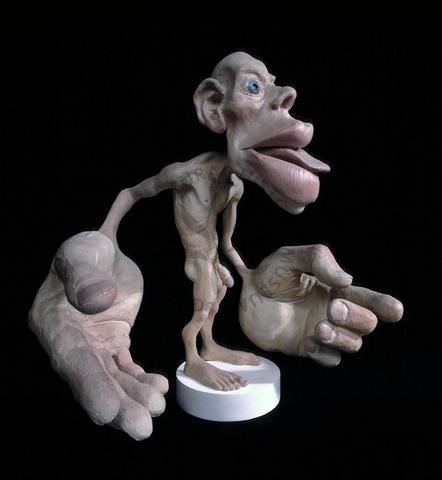An introduction to animal structure and function: Functional Anatomy: An Overview
-Anatomy is defined as the study of the structures of an organism.
-Physiology is defined as the study of the functions of an organism.
-Tissues are groups of cells that have a common structure and function.

-There are 4 types of tissue:
- Epithelial tissue occurs in the sheets of tightly packed cells, covers the body, lines the organs of the body, and acts as a protective barrier. One side of an epithelial cell is always bound to an underling supportive surface called the basement membrane. The outside surface is facing either air or a fluid environment.
- Connective tissue mainly supports and binds to other tissues. It consists of scattered cells within an extracellular matrix. Some connective tissues are cartilage, tendons, ligaments, bone, and blood.
- Muscle tissue is composed of long cells called muscle fibers. Muscle fibers contract when they are stimulated by a nerve impulse. This is the most abundant tissue in most animals. There are three types of muscle- skeletal muscle, cardiac muscle, and smooth muscle. *Know types of muscles!*

- The functional unit of nervous tissue is the nerve cell, or neuron. The tissue senses and transmits signals from one part of the body to other neurons, glands, muscles, and the brain.

-For animal survival tissues, organs, and organ systems must act in a coordinated manner. Two major organ systems specialize in control and coordination.
-In the endocrine system, chemical signals called hormones are released into the bloodstream and are broadcast throughout the body. Different hormones cause specific effects, but only in cells with specific receptors for that released hormone.
-Endocrine cells secrete specific hormones signaling molecules (shown as red dots)- into the bloodstream. Only cells expressing the corresponding receptor receive and respond to the signal.
-In the nervous system, neurons transmit information between specific locations. Only three types of cells receive nerve impulses: neurons, muscle cells, and endocrine cells. Ex: hand on the stove.
-Nerve cells (neurons) generate signals that travel along axons. only cells that for a specialized junction with the axon of an activated neuron receive and respond to the signal. *Way to remember axons: away. they carry the neurons away.*
Regulating the internal Environment
-The interstitial fluid refers to the internal environment of an animal. Homeostasis is the state of internal balance on an animal. The internal environment is maintained to be constant even when the external environment changes.
-Homeostasis control systems have three components- a receptor, a control, and an effector. The receptor detects a change; the control center processes information an directs the effector to make an appropriate response.
*QUESTIONS:
- Where are collagenous fibers primarily found in animal cells?
b) straited
c) bone
2. Is blood a tissue?
a) yes
b) no
3. Which of the three muscle types is voluntary?
a) cardiac muscle
b) skeletal muscle
c) smooth muscle
*Answers:
1. a
2. a
3. b
No comments:
Post a Comment